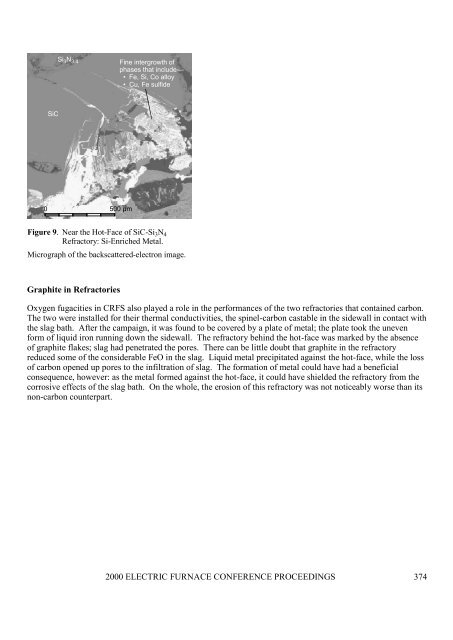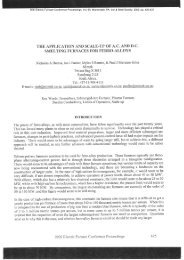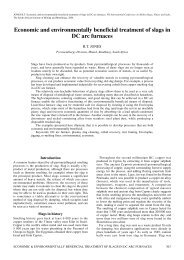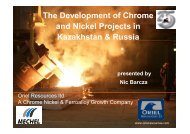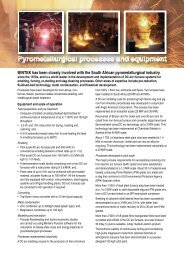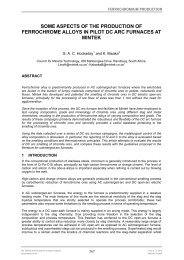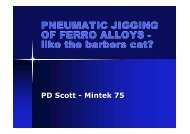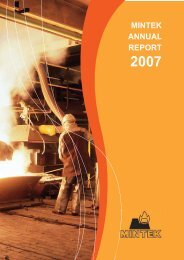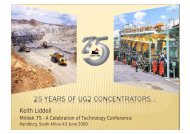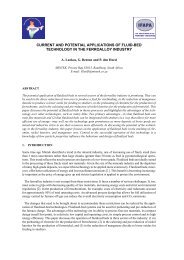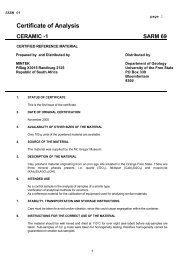Furnace refractory erosion - Mintek
Furnace refractory erosion - Mintek
Furnace refractory erosion - Mintek
Create successful ePaper yourself
Turn your PDF publications into a flip-book with our unique Google optimized e-Paper software.
Si 3 N 3.4Fine intergrowth ofphases that include—• Fe, Si, Co alloy• Cu, Fe sulfideSiC0 500 µmFigure 9. Near the Hot-Face of SiC-Si 3 N 4Refractory: Si-Enriched Metal.Micrograph of the backscattered-electron image.Graphite in RefractoriesOxygen fugacities in CRFS also played a role in the performances of the two refractories that contained carbon.The two were installed for their thermal conductivities, the spinel-carbon castable in the sidewall in contact withthe slag bath. After the campaign, it was found to be covered by a plate of metal; the plate took the unevenform of liquid iron running down the sidewall. The <strong>refractory</strong> behind the hot-face was marked by the absenceof graphite flakes; slag had penetrated the pores. There can be little doubt that graphite in the <strong>refractory</strong>reduced some of the considerable FeO in the slag. Liquid metal precipitated against the hot-face, while the lossof carbon opened up pores to the infiltration of slag. The formation of metal could have had a beneficialconsequence, however: as the metal formed against the hot-face, it could have shielded the <strong>refractory</strong> from thecorrosive effects of the slag bath. On the whole, the <strong>erosion</strong> of this <strong>refractory</strong> was not noticeably worse than itsnon-carbon counterpart.2000 ELECTRIC FURNACE CONFERENCE PROCEEDINGS 374


